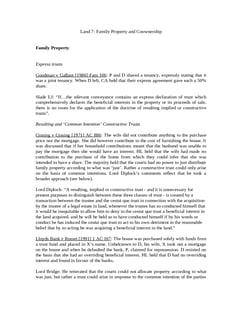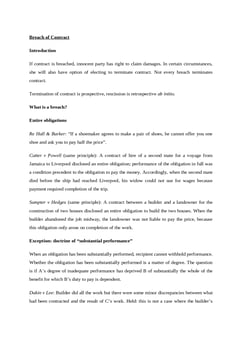Crabb v Arun D C [1976] Ch 179
Judgement for the case Crabb v Arun D C
Table Of Contents
Plaintiff had access to a road at point A and wanted access at point B. He had a meeting with Defendant and they agreed that Plaintiff could have another access point “in principle”. Defendant then built a fence as agreed with Plaintiff and put in a gate at point B, so that Plaintiff now had his second access.
Plaintiff later assigned his rights to access point A to a 3rd party so that his only access to the road was at the gate at point B. Defendant then replaced the gate with a fence, locking Plaintiff in.
CA allowed Plaintiff’s claim.
Lord Denning
Estoppel can give a cause of action concerning rights or interests over land and is founded in equity. This is “proprietary estoppel”.
In this case Defendant lead Plaintiff to believe that he would have a right to access the road at point by putting in a gate, etc. and Plaintiff relied on this, so that it would be inequitable to allow Defendant to go back on his implied granting of the right.
Lawton LJ
Found a firm agreement between Defendant and Plaintiff and stated that Defendant had given an undertaking and therefore Plaintiff had a right top access at point B.
Estoppel is to “mitigate the rigours of strict law”.
Lord Scarman
The courts cannot find an equity established unless it would be “unconscionable and unjust” to allow a strict enforcement of legal rights.
He also said that he didn’t find the proprietary-promissory distinction helpful.
The danger with this is that, unlike Denning, he has set no restrictions on which forms of estoppel could be used to found a cause of action.
RELATED CASES
For Further Study on Crabb v Arun D C
Need instant answers? Our AI exam tutor is here to help.
Ask questions 🙋 Get answers 📔 It's simple 👁️👄👁️
Our AI is educated by the highest scoring students across all subjects and schools. Join hundreds of your peers today.
Get StartedSimilar Cases
Related Product Samples
These product samples contain the same concepts we cover in this case.
| Land Law | Easements Notes (48 pages) |


 Since 2010, Oxbridge Notes has been a trusted education marketplace, supplying high-quality materials from top achievers at universities like Oxford, Cambridge, LSE, Harvard, and Yale.
Since 2010, Oxbridge Notes has been a trusted education marketplace, supplying high-quality materials from top achievers at universities like Oxford, Cambridge, LSE, Harvard, and Yale.